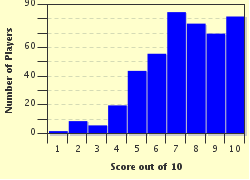Quiz Answer Key and Fun Facts
1. Before it fell out of use around 400 CE, Ancient Egyptian was incorporated into which of these languages?
2. For centuries, people attempted to translate hieroglyphics. Fittingly, what group of people attempted to translate them as early as the 9th century CE?
3. When Napoleon's troops came upon the Rosetta Stone, it was not in use as a linguistic device. What was the now-famous Rosetta Stone a part of when it was rediscovered?
4. Of the Rosetta Stone's three inscriptions, which one was the easiest to translate?
5. At the time of the Rosetta Stone's discovery, Demotic was essentially an unknown language.
6. Poring over the hieroglyphics, Thomas Young focused his name on a cartouche, which he suspected contained a proper name. What was this name, which is the name of the person who made the decree inscribed on the stone?
7. Before giving up on translating the hieroglyphics, Young had corresponded with linguistic prodigy Jean-Francois Champollion. When did Champollion first see and become interested in hieroglyphics?
8. Champollion worked with more than just the Rosetta Stone. Looking at another cartouche he obtained, he saw four letters, the first of which was a disc with a dot. How did he figure it was pronounced?
9. By determining the meaning of the disc with a dot, what important determination did Champollion make about hieroglyphics?
10. The Rosetta Stone is a unique, complete artifact.
Source: Author
nautilator
This quiz was reviewed by FunTrivia editor
bloomsby before going online.
Any errors found in FunTrivia content are routinely corrected through our feedback system.

